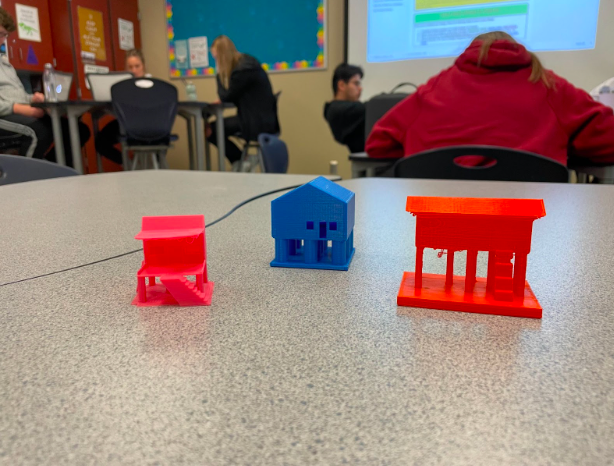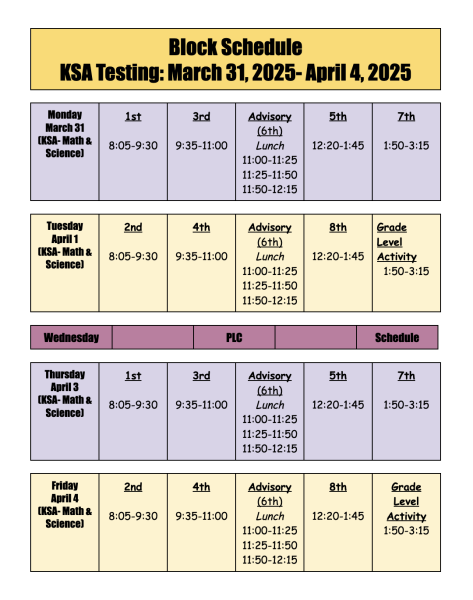Downsizing a Scary Situation
Integrated science is doing a project that teaches about flood proof houses and how to prepare a house in case of a flood. The goal is to use TinkerCad to design a house that will survive against a flood. Then, students 3D print and test out all the houses as a class using sand and water to simulate a flood.
“We are building small, 3D houses using the TinkerCad program, and we do a project where we have a bucket of sand and make a land spread. Then we put the houses in the sand and add water to reenact the flood. After, you see which [flood proof precaution] worked the best,” Laney Chezem, 10, said.
However, there are more steps than just designing the house.
“[In order] to make the house flood proof, you have to know how floods work and how people actually flood proof their houses in real life, and [you have to know] the steps to take [in order to] flood proof it,” Hailey Bergman, 10, said.
In order to figure out how to flood proof a house, students had to do some research.
“First, we had to know what a flood was; so, we looked at the different types of floods, where they occurred, and why. Then, we looked at how houses take precautions to flood proof. [After that], we started building,” Bergman said.
After research, students had to start the design process. Since some students were not familiar with the program, the designing portion had some mixed feelings.
Bergman said, “It can be a little confusing because [the software] we are using isn’t used in any other classes.”
Chezem shared their opinion on the design portion.
“I like using TinkerCad, I think it’s fun. It’s not like a game, but it’s a different alternative to just writing notes,” Chezem said.
Although the project is not for everyone, it is an interesting twist on an important subject that can help students in case of an emergency in the future.

Hi, my name is Hannah Mueller and this is my third year in SPUB and I am our website manager this year. I am most excited to continue to write about things...








